
.
If you have any comments, observations, or questions about what you read here, remember you can always Contact Me
All content included on this site such as text, graphics and images is protected by U.S and international copyright law.
The compilation of all content on this site is the exclusive property of the site copyright holder.
Back in the day, the once-upon-a-time days of the Howell Living History Farm, the opening days of the 20th century, wood was important for so many things. Split rails for fences. Firewood for heating and cooking and making maple syrup. And more.

A basket of stove wood.
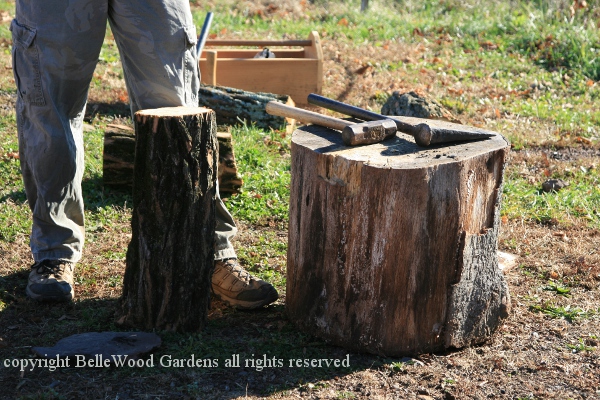
There are tools specific to making firewood. Splitting wedges and a maul, for doing it by hand. Today, children were offered an opportunity to try it themselves. One adaptation made here at Howell was to attach the wedge to a handle. The pleasant young man teaching the children said it was nerve-wracking to kneel and hold the wedge while a 5-year-old swung at it with the maul. Ouch! The handle makes things safer for him.

Tools for the adults working with the logs. This is a peavey, used to grip and roll a log.
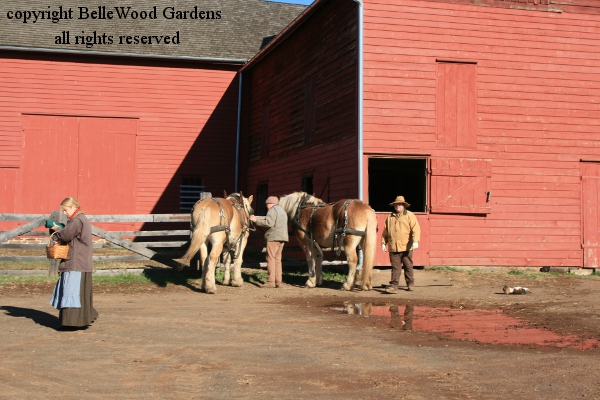
Howell's team of Belgian draft horses are a two horsepower multipurpose team.
They can plow, pull wagons, skid logs out of the woods.
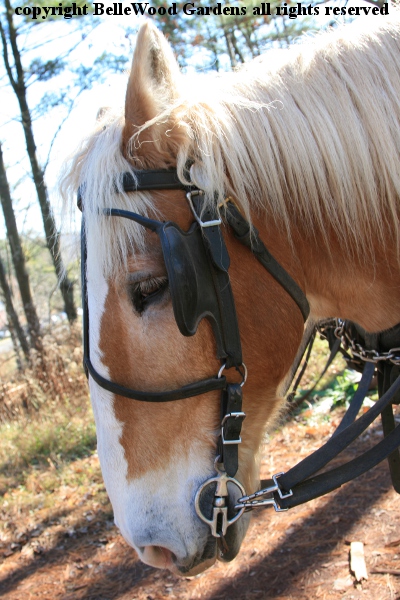
Calm and good natured, Belgians are a popular breed of work horse.
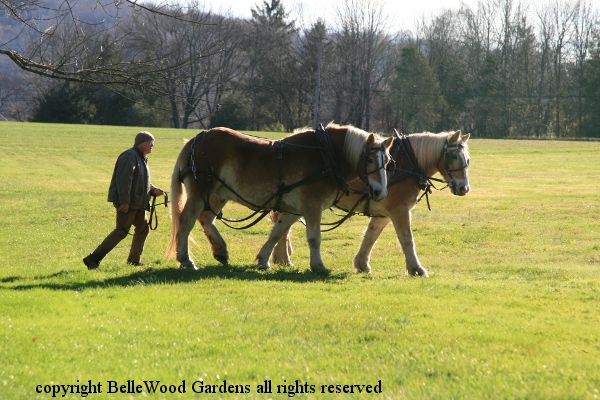
Walking the team over to the work area. This piece of woodland was damaged in a couple of storms when powerful winds toppled trees. There are a reasons to remove them, above and beyond the usefulness of their wood. The area up by the green barn has been used to park and store some of the farm equipment. Demonstrating how this would have been managed back in the historical period is an important part of the Howell Living History Farm's mission. And leaving the wood to just rot is wasteful when so much is needed for firewood.

Skidding a log out of the woods.

Pat Hlubick brought a team of his Brabants to help with the work. As an aside - Belgians are an American version of the European Brabants, which are a stockier, more muscular breed. Their heavy necks are something else though. These are stallions, not geldings. Well trained and well mannered. Today is a work day, so the horses are in their working clothes - no bling on their harness as they'd have on a show day.

Log brought out of the woods so back they go for another one.

The Belgians and Brabants are willing workers. But today, the expert team
is Scott Stephens pair of Suffolk Punch, May and June.

If the farm's Belgians are multipurpose, these Suffolk Punch are specialists. Because, you see, they're Scott's "partners" in Stephens Sawmill & Horse Logging business in Brodheadsville, Pennsylvania. And all skidding is done with horses.

And they are so lovely in motion.
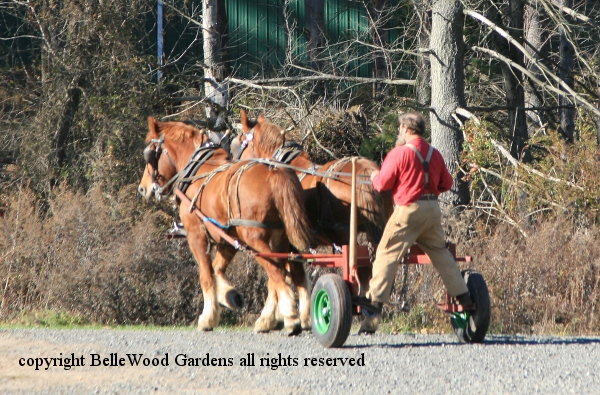
It's clear the three of them, team and driver, have a great working relationship
as he plays charioteer back up into the woodlot.

Using the horses to work the logs, one at a time, up onto the wagon. Two ramps, heavy manila rope looped over towards each end. Two blocks to take the strain at the far side of the wagon bed. Hitch the team and walk away, and bring the log up onto the wagon bed. Load a few logs, hitch the team, and bring the logs to the work area for sawing and splitting. The way it was done, in the start of the 20th century.
Back to Top
Back to November 2015
Back to the main Diary Page